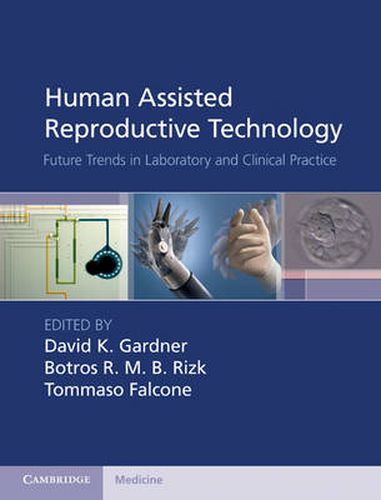Readings Newsletter
Become a Readings Member to make your shopping experience even easier.
Sign in or sign up for free!
You’re not far away from qualifying for FREE standard shipping within Australia
You’ve qualified for FREE standard shipping within Australia
The cart is loading…






Human Assisted Reproductive Technology: Future Trends in Laboratory and Clinical Practice offers a collection of concise, practical review articles on cutting-edge topics within reproductive medicine. Each article presents a balanced view of clinically relevant information and looks ahead to how practice will change over the next five years. The clinical section discusses advances in reproductive surgery and current use of robotic surgery for tubal reversal and removal of fibroids. It looks into the refinement of surgical procedures for fertility preservation purposes. Chapters also discuss non-invasive diagnosis of endometriosis with proteomics technology, new concepts in ovarian stimulation and in the management of polycystic ovary syndrome, and evidence-based ART. The embryology section discusses issues ranging from three-dimensional in-vitro ovarian follicle culture, and morphometric and proteomics analysis of embryos, to oocyte and embryo cyropreservation. This forward-looking volume of review articles is key reading for reproductive medicine physicians, gynecologists, reproductive endocrinologists, urologists and andrologists.
$9.00 standard shipping within Australia
FREE standard shipping within Australia for orders over $100.00
Express & International shipping calculated at checkout
Human Assisted Reproductive Technology: Future Trends in Laboratory and Clinical Practice offers a collection of concise, practical review articles on cutting-edge topics within reproductive medicine. Each article presents a balanced view of clinically relevant information and looks ahead to how practice will change over the next five years. The clinical section discusses advances in reproductive surgery and current use of robotic surgery for tubal reversal and removal of fibroids. It looks into the refinement of surgical procedures for fertility preservation purposes. Chapters also discuss non-invasive diagnosis of endometriosis with proteomics technology, new concepts in ovarian stimulation and in the management of polycystic ovary syndrome, and evidence-based ART. The embryology section discusses issues ranging from three-dimensional in-vitro ovarian follicle culture, and morphometric and proteomics analysis of embryos, to oocyte and embryo cyropreservation. This forward-looking volume of review articles is key reading for reproductive medicine physicians, gynecologists, reproductive endocrinologists, urologists and andrologists.